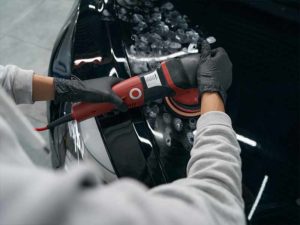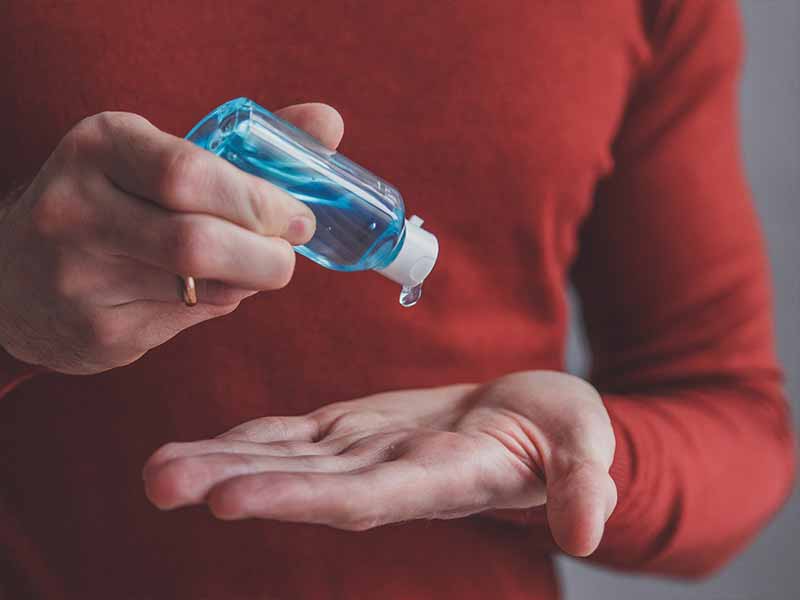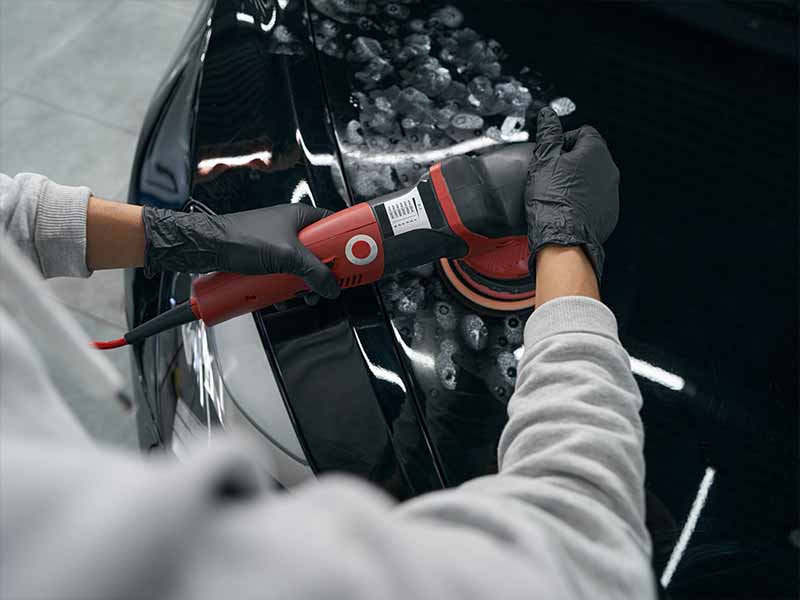Table of Contents
- How To Protect A Car That Sits Outside
- How to Protect a Car from Sun Damage Without a Garage
- How to Protect a Car from Sun in Open Parking
- How to Protect a Car Interior from Sun Damage
- Sun Protection for Car Paint
- How Long Does It Take for the Sun to Damage a Car's Paint?
- How Can I Protect My Car from Rain?
- Parking Car Outside vs. Garage
- Conclusion: Is It Bad to Park a Car Outside?
A vehicle of any kind is a significant financial investment. Therefore, you want to take care of it, which will take additional money and time on your end.
How To Protect A Car That Sits Outside
- Be mindful of where you park – avoid trees but try to find some shade
- Consider a car cover, portable shelter, or car umbrella
- Keep your paint protected with wax, paint sealant, ceramic coating, or paint protection film
- Protect the interior from UV rays with window shades or window tint and keep interior panels coated with UV spray protectants
A priority for car owners when taking care of this investment should be protecting it from sun damage and other elements. Ultimately, this should mean a garage for your vehicle to be parked in. Of course, not everyone has this luxury. Luckily, there are alternatives when you must protect a car that sits outside.
If you’re ready to learn about protecting a car from sun damage without a garage, how the sun can damage your car’s paint, and what the difference between parking outside and in a garage is, then you’re in the right place.
How to Protect a Car from Sun Damage Without a Garage
From man-made materials to Mother Nature and environmental pollutants, there are so many different things in the world that can destroy the clear coat and paint on your vehicle. When these materials are allowed to sit on the surface of your paintwork and cure, they can eat into the clear coat and down into the base coat rapidly.
The most effective way to protect your vehicle is to park it in a garage. Unfortunately, this is not a viable option for everyone.
So, when you don’t have a garage and need to protect your vehicle from potential damage from the sun, you have several options at your disposal.
How to Protect a Car from Sun in Open Parking
Car Cover
A cost-effective alternative to a covered garage is fitted paint friendly car cover. Select a car cover that is water-resistant, paint-friendly, and breathable. Never choose one that will trap moisture, as this will damage your car’s paint. Always have a clean, dry car before putting the cover on; otherwise, the finish may get scratched.
Portable Shelter/Carport
When you don’t have a garage to park in, you can always invest in a portable shelter or carport to park your car underneath. While it isn’t a closed garage, it is a sheltered space that will offer the protection you need for your vehicle from the sun, bird poo, other environmental elements, and hail damage.
Car Umbrella
Another option you have available is a car umbrella. It’s just like it sounds: an umbrella that is designed to go over the top of your vehicle and shield it from the various elements from above, including UV radiation, bird poop, rain, hail, sleet, snow, etc.
How to Protect a Car Interior from Sun Damage
The interior of your vehicle is just as important as the exterior and can suffer just as much damage from the sun. The sun can wreak havoc on your interior by fading the upholstery, cracking the dashboard, and cracking the leather.
Sun Shade
One way to prevent this from happening is to place a sun shade in the front and rear windshields of your vehicle each morning. This can easily be done as you are exiting your vehicle to head into work. Plus, when you come out at the end of the day, your vehicle will be much cooler from the reduction of sun rays and extreme heat.
Window Tint
Window tint can help to reduce the number of UV rays that enter the windows of your car. In fact, window tint can help block as much as 99.9% of these harmful UV rays. This will not only reduce the temperature inside of the car, but it will also minimize the amount of damage that the thermal rays of the sun are able to do to the interior plastics, upholstery, etc.
UV Spray Protection
Another way to protect the interior of your vehicle from sun damage is with a UV protection spray. This type of spray will not only help clean the interior of your car and keep it looking new, but it will help with the prevention of discoloration, fading, and cracks. Most of these sprays are versatile, meaning they work on multiple surfaces, such as vinyl, rubber, PVC, fiberglass, finished leather, and more.

Sun Protection for Car Paint
Carnauba Wax
When applied to your vehicle’s clear coat, carnauba car wax will repel virtually all contaminants, moisture, heat, UV rays, and oxidation. A carnauba wax finish will generally last roughly six to eight weeks, depending on your climate. If you live in an area where the climate is hot and humid, the finish is likely to wear off faster.
Paint Sealant
Once a paint sealant has hardened on top of your clear coat, it will last for roughly a year. Paint sealants are available in many forms, such as liquid polishes and car waxes. These liquid polishes and sealant waxes can be applied with an electric polisher or by hand with a microfiber cloth, making it extremely easy and quick to apply to the paintwork.

Ceramic Coating
A ceramic coating is designed to be applied on top of your vehicle’s paint surface, sit for a few moments, wiped off with a clean microfiber towel, and then buffed off for a clean, polished look. These can resist scratches, UV rays, scuffs, dirt, and bird droppings.
Paint Protection Film
Paint Protection Film is essentially a clear coat cover that offers an additional layer of protection for the exterior of your vehicle. It protects your paint from the harmful UV rays that beat down from the sun and normally fade the clear coat and base coat of paint. It can even help prevent the paint surface from dust, grime, minor scratches, and small dents.How Long Does It Take for the Sun to Damage a Car's Paint?
The amount of time it will take for the sun to damage the paintwork on your car will vary based on a number of different factors. For instance, different color paints will fade at different rates under direct sun exposure. Oftentimes, red tends to suffer the most significant sun damage and at the highest rate of speed.
Another important factor that plays a role is car maintenance, such as whether you have taken measures to prevent sun damage from occurring to the surface paint.
As a general rule, without any significant preventative measures for sun damage, the car paint can last at least five to 10 years before any signs of damage, such as fading.
How Can I Protect My Car from Rain?
Just like protecting your car from sun damage, you can avoid significant water damage by following a few preventative measures to protect your car from the rain. Many of these tips are the same as protecting your car from UV rays.
You should park your vehicle indoors or out of the direct sunlight, invest in a fitted car cover, and add a protective layer of wax. Finally, you should only drive in the rain when absolutely necessary. By frequently driving your car in the rain, you are increasing the risk of your car rusting and future technical issues.
Can Rain Damage a Car?
Most people don’t see rain as a harmful element to their vehicles. However, rain actually causes damage to your car. Depending on its form, rain can cause minor to severe damage.
Your traditional rainfall can cause interior or exterior damage. Freezing rain can result in moderate to significant body damage. Flooding has the potentially to completely destroy your vehicle.
Rainwater is jam-packed with various types of pollutants, which is why it can cause damage to your vehicle’s paint. It is often referred to as acid rain, and once that rain dries on the exterior of your car, it can cause water spots and swirl marks.
Does Wax Protect Car Paint from Rain?
In short, yes, a quality wax can protect car paint from rain.
If you have ever waxed your vehicle and it rained shortly after, you have probably noticed that the water simply beads up on the surface and rolls right off. Why does this happen?
Wax is considered hydrophobic, which means it is water-resistant. As a result, the wax repels all of the contaminants that are also in the water.

Parking Car Outside vs. Garage
Is Parking Outside Bad for Your Car?
Parking your vehicle outside leaves it openly subjected to all of the elements, including dirt, tree sap, UV damage, etc. As a result, your clear coat and base coat will begin to deteriorate at a much faster rate.
As a general rule, though, if you maintain the exterior of your vehicle, parking your car outside is usually fine. This is especially true if you keep it under a carport and/or use a fitted car cover.
Do Cars Last Longer in a Garage?
Yes! When cars are kept inside of a garage and protected from UV radiation, tree sap, bird poop, and other elements, they will stay in better condition for an extended period of time. As a result, they will last longer and have a higher resale value than vehicles that are parked outside directly in the elements.
When Not to Park Your Car in a Garage
In some instances, such as during the wintertime, it may not be best to store your vehicle in a garage. The reason to avoid parking your car in a closed garage space is due to the increased moisture and lack of ventilation. This creates the perfect environment for condensation to form, leading to the potential for rust.
Conclusion: Is It Bad to Park a Car Outside?
If you have any concerns regarding the overall appearance and value of your vehicle, then you won’t want to park your car outside all the time.
While every now and then is fine, especially if you take the proper measures to protect the paint from the elements, it is best to park your vehicle inside a sheltered space like a garage to help maintain a long lasting shine.
Of course, there are still moments when parking in a garage is not ideal, such as in the wintertime. At the same time, you may not have access to a garage or other closed structure to park your car in.
And that’s okay because there are plenty of other options for car owners to protect their vehicle’s clear coat and base paint coat when parked outside, including car covers, carports, car umbrellas, paint protection films, ceramic coatings, and more.









